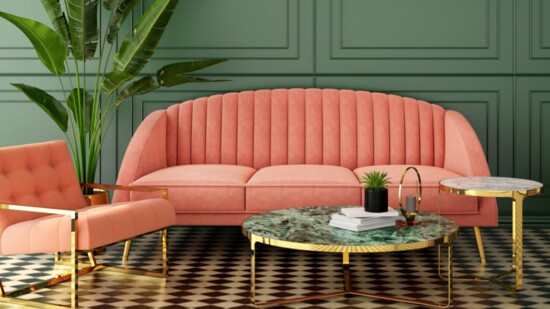The Cutting edge, the Vanguard, The Avante Garde; Who are the tastemakers in Interior Design and how do they know what people need and want? The answers may surprise you. The true trendsetters are the visionary few that not only take the popular pulse, but in an almost mediumistic way, predict the changes in taste that are about to occur. Fresh ideas must be both practical and intuitive and evolve from a pure source – a deeply internal source, inspired by experience coupled with ingenuity.
We are all subject to the daily soup we swim in; our milieu or environment, our métier or specialized area of activity. It is impossible to not be influenced by what is and what has come before. However, it is the job of taste makers to stretch into the future and determine what is missing, where the pain is, what lacks soul, and what has not yet been tried. It is not necessary to reach too far forward to tap the next level and often it means reaching back into the past to repurpose an outdated style trend. Clearly what must be original is the sum total of the finished idea; the birth of a new identity, something that feels obvious, necessary, and logical in its eureka! moment. The thing of beauty we know to be true when we see it: The Birken bag, granite counter tops, The Aubusson carpet, live edge tables. The thing whose time has come.
In tandem with raw inventive genius is the science of design. A pragmatic aspect of design invention which requires very specific knowledge applied to the human spirit. Spatial psychology, known as proxemics, plays a huge role in the design choices that are being looked at and implemented today. The contemporary design index leans toward promoting one’s personal style, multi-cultural connections, and comfort that is personalized, practical, and pleasurable. Today, most people don’t care about impressing others or being impressed, they care about being surrounded by a nurturing spatial continuity that makes them feel relaxed and revitalized. Whether this is at home, work, or in a public space, this continuity fulfills the modern psychological need for place identity; a form of visual branding that creates a sense of comfortable and usable familiarity. Great design always addresses both form and function - that’s how you know it is great design. People want to feel a part of their environment and to be included in its raison d’etre. Awareness of complex social and spatial relationships and how they affect us is the key to creating compelling and efficacious trends in design.
So, what does the future hold? The words natural, artful, and colorful come to mind. We have only just begun to explore the psychology of color and how it relates to creating artful environments that affect moods, inspiration, and productivity levels. Aesthetics are more than just pleasurable; just as food nourishes the body, aesthetics are sustenance for the psyche. Environments that heal and promote health are a future wave that is coming to shore.
This ultra-aesthetic approach to design must have a real purpose, not just kitsch or fun, but a functional and ergonomic base that turns “user friendly” into a “user romance”. This dynamic relationship of opposites shapes these bio-environments like they were born not made. Eric Fromm first used the term Biophilia to describe a psychological orientation of being attracted to all that is alive and vital. In the same spirit, these vital forces will be utilized more and more in eco-design palettes (such as living walls with edible gardens, and multi-functional furniture made from plant materials) to enrich our lives from the inside out. Visit mctwodesign.com
